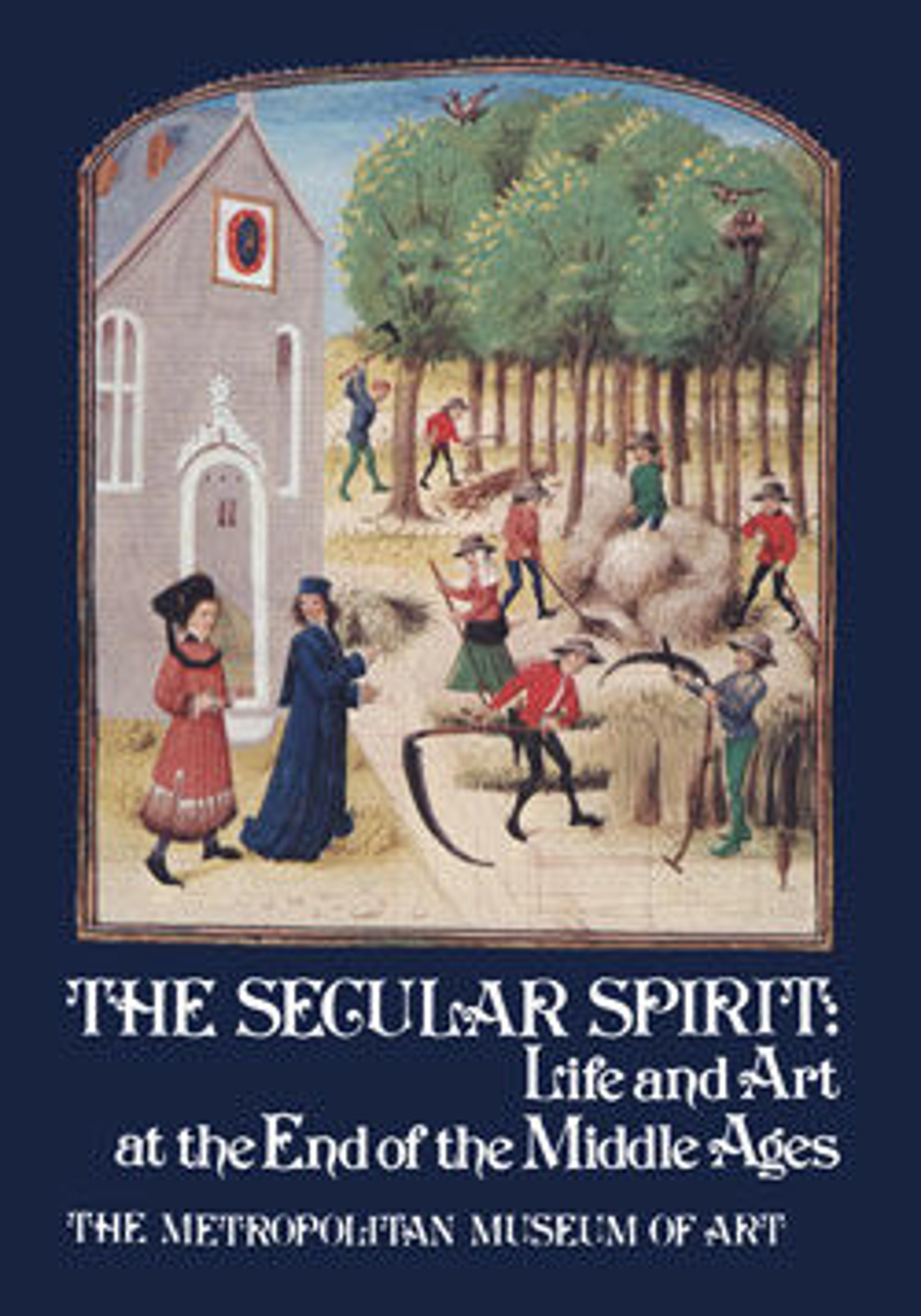Plate
According to some scholars, Dinant was the only French-speaking town of the Lowlands to join the German Hansa as a selling agent and a guarantor of the delivery of copper ( the major component of both bronze and brass) imported from northern Germany via Cologne and Aachen. Already the center of a flourishing metalworking trade, Dinant became the principal center for the production of plates such as this one. Its distinct position is evident in the generic name “dinanderie,” which came to be associated with metalwork of this sort. Dinant’s primacy in the trade continued until the city was sacked by the Duke of Burgundy in 1466.
Although dinanderie plates were in enormous demand in the second half of the fifteenth century, the traditional, painstaking method of brass beating was not to be replaced by the easier process of casting until the sixteenth century. The need for mass production led to a decline in quality. Certain motifs, like the seated woman holding a coronet of flowers on this plate, were repeated almost without variation. The encircling motifs did, however, become more complex. In this example, the petallike shapes alternate with addorsed flowers flanking tiny bears seated on poles, each grasping one of its hind paws.
Although dinanderie plates were undoubtedly proudly displayed on sideboards (and sometimes used in the liturgy), the worn and battered condition of many of them indicates that they might also have served as charges on which the food was brought to the table.
Although dinanderie plates were in enormous demand in the second half of the fifteenth century, the traditional, painstaking method of brass beating was not to be replaced by the easier process of casting until the sixteenth century. The need for mass production led to a decline in quality. Certain motifs, like the seated woman holding a coronet of flowers on this plate, were repeated almost without variation. The encircling motifs did, however, become more complex. In this example, the petallike shapes alternate with addorsed flowers flanking tiny bears seated on poles, each grasping one of its hind paws.
Although dinanderie plates were undoubtedly proudly displayed on sideboards (and sometimes used in the liturgy), the worn and battered condition of many of them indicates that they might also have served as charges on which the food was brought to the table.
Artwork Details
- Title:Plate
- Date:ca. 1480
- Geography:Made in Lower Rhine, Germany
- Culture:German or South Netherlandish
- Medium:Brass
- Dimensions:diam. 16 7/8 × 2 15/16 in., 4.6 lb. (diam. 42.9 × 7.5 cm, 2083g)
- Classification:Metalwork-Brass
- Credit Line:Gift of Irwin Untermyer, 1964
- Object Number:64.101.1501
- Curatorial Department: Medieval Art and The Cloisters
More Artwork
Research Resources
The Met provides unparalleled resources for research and welcomes an international community of students and scholars. The Met's Open Access API is where creators and researchers can connect to the The Met collection. Open Access data and public domain images are available for unrestricted commercial and noncommercial use without permission or fee.
To request images under copyright and other restrictions, please use this Image Request form.
Feedback
We continue to research and examine historical and cultural context for objects in The Met collection. If you have comments or questions about this object record, please contact us using the form below. The Museum looks forward to receiving your comments.
